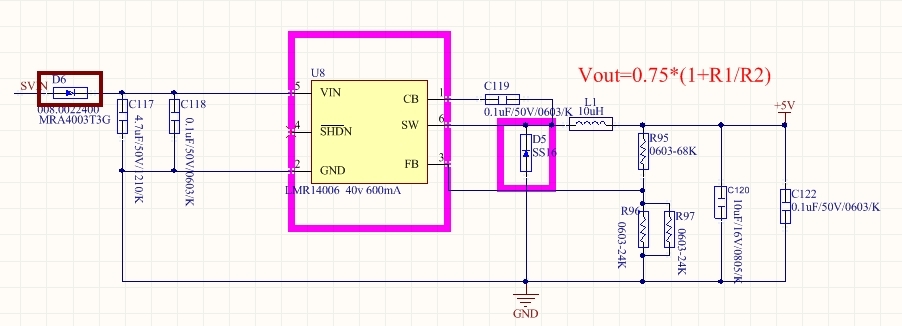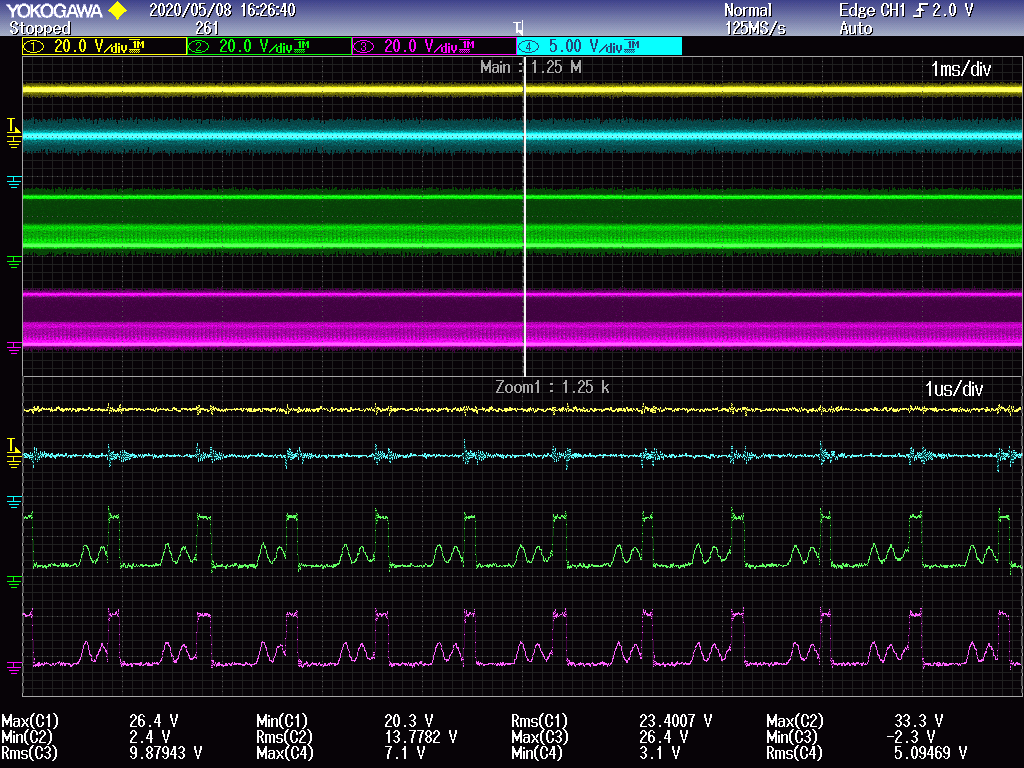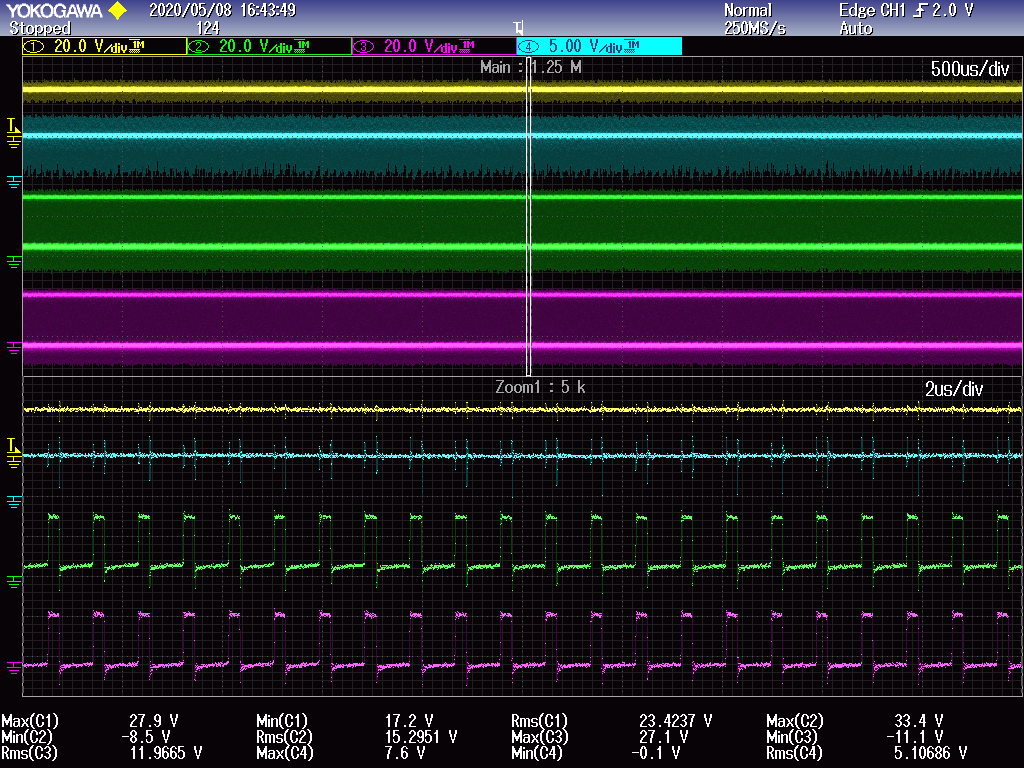Hi,
my customer has make buck circuit with LMR14006 for 5V output, input range is 9-32V.
Diodes is SS16, datasheet link is as below:
https://www.panjit.com.tw/upload/datasheet/SS12_SERIES.pdf
They have make 2000pcs board, and find about 1% of the board input current larger than normal and the diode and inductor is over warm.
When input is 20V, the input current should be around 0.025A.
But 1% of the board the input current will increase to 0.047A, or 0.075A. Different boards have different current, but all are larger than normal.
Could you please suggest how should we check the problem? What waveforms are needed?





